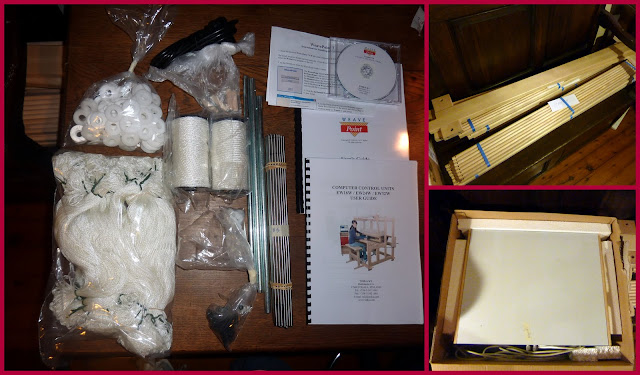It has been a busy week at work and the lovely weather this weekend lent itself to tennis,cycling and a bit of swimming. In spite of all these distractions I have virtually finished the installation - I just have to do a bit of adjustment of the harnesses and then I am ready to thread, sly and weave as I already have a warp sitting on the back beam.
I finally got the harnesses finished on Friday evening and have been hanging them over the weekend. It was just a case of follow the instructions and try to get everything as level as possible from the outset. I have a small spirit level that sits on top of the shafts and I got all the shafts sitting neatly on two broom handles before I tied them up.
There was one slightly hairy moment when the weight of the shafts pulled the control unit across to one side - hence the two pieces of crenelated wood that can be seen in one of the pictures [they are the shaft holders that I won't be needing any more].


I had previously loaded the WeavePoint software onto a laptop and it was a matter of minutes to connect the unit up to the power and the computer and, hey presto, it all worked first time, immediately! I pressed the peddle and shafts moved up and down according to the draft so I poured myself a cold beer and that's it for this weekend. Brilliant!
















































